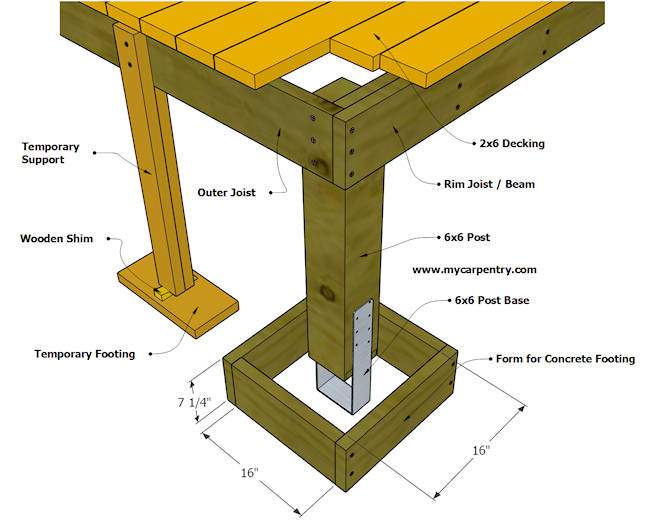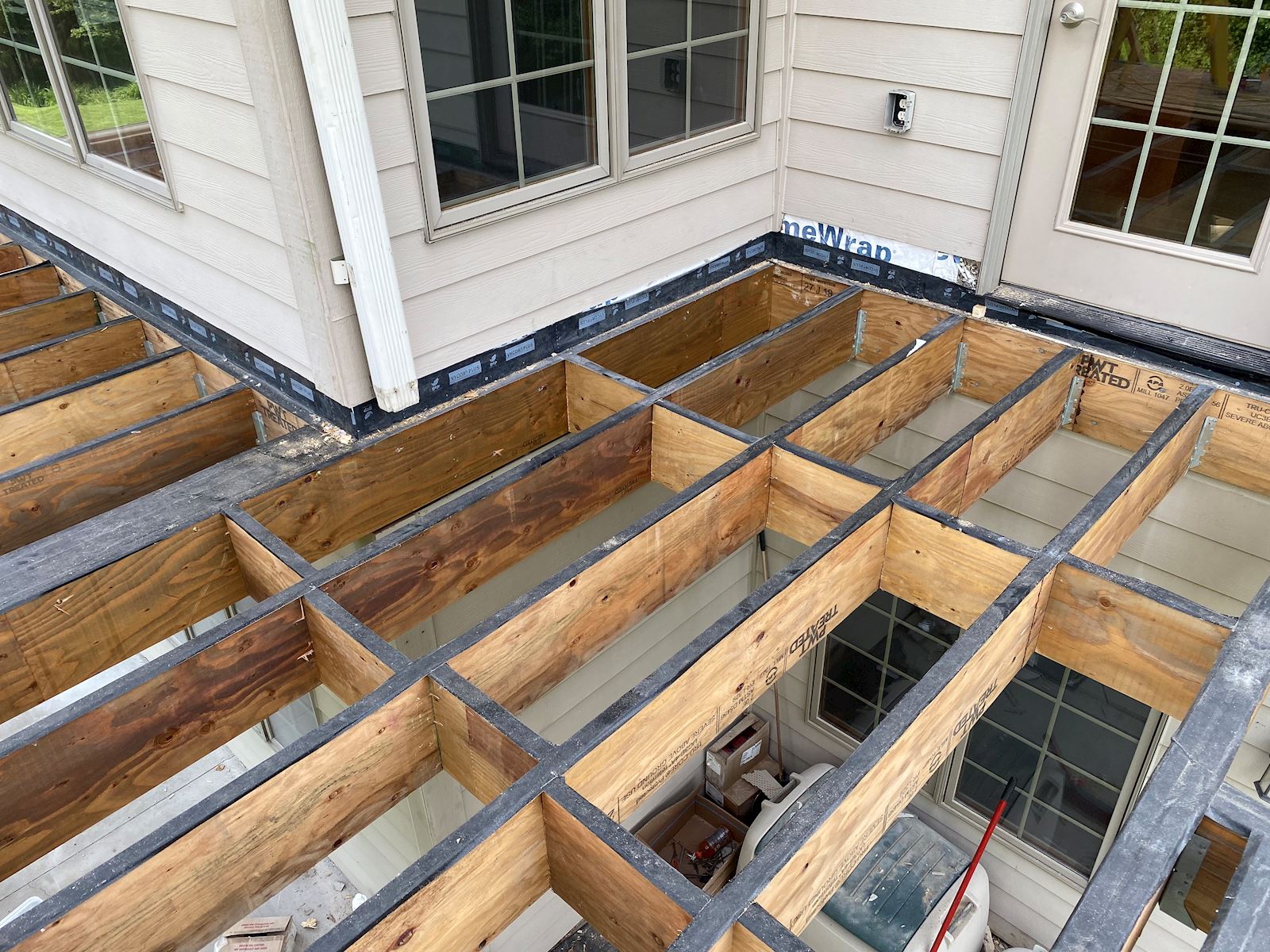Building a Solid Structure: Unveiling the Keys of Deck Footing
When it involves building a deck, one vital aspect that frequently goes forgotten is the foundation or ground. A solid and properly designed deck ground is essential for the stability and long life of any kind of deck structure. In this helpful guide, entitled "Building a Solid Structure: Unveiling the Keys of Deck Ground," we will certainly discover the importance of correct footings, the different types offered, and the variables to think about when picking the appropriate ones for your deck job. We will give detailed guidelines on exactly how to prepare and install grounds correctly. We will certainly talk about the value of regular upkeep and evaluation to guarantee the ongoing security and toughness of your deck footings. Join us as we reveal the secrets to building a trusted deck foundation.
Value of Proper Footings

Among the key reasons correct grounds are vital is to avoid the deck from sinking or changing. Footings that are not deep enough or are badly constructed can create the deck to resolve erratically or move in time. This can result in an uneven deck surface, creating a stumbling threat and compromising the structural integrity of the entire deck.

Moreover, correct footings additionally help to secure the deck from moisture damages. By boosting the deck structure over the ground, grounds stop the wood from entering into straight call with dampness, lowering the danger of rot and decay.
Kinds Of Deck Footings
The option of appropriate deck grounds is a crucial aspect in making certain the stability and long life of a deck framework. There are numerous types of deck footings that can be utilized, each with its very own benefits and considerations.
One typical sort of deck footing is the concrete pier ground. This involves digging openings in the ground and putting concrete to create a strong foundation for the deck. Concrete piers are flexible and can be used in a selection of soil problems, making them a popular choice for lots of deck tasks.
Another choice is the helical pier footing. This sort of ground contains a steel shaft with helical plates that are screwed right into the ground. Helical piers are ideal for locations with poor soil problems or locations susceptible to high water tables. They provide exceptional security and can be adapted to the preferred height.
For decks improved level or superficial structures, a shallow ground may be ideal. Superficial footings are commonly constructed from concrete and are placed directly on the ground surface. They are best matched for smaller decks or locations with secure dirt conditions.
Aspects to Think About When Choosing Footings
When choosing grounds for a deck, it is important to meticulously take into consideration numerous elements that will inevitably figure out the stability and sturdiness of the structure. Larger decks with hefty loads or multiple degrees need more substantial grounds to give adequate support. By thoroughly thinking about these elements, home owners can make enlightened decisions when selecting grounds for their deck, making certain a long lasting and stable structure.
Actions to Prepare and Install Footings
To prepare and mount footings for a deck, it is essential to adhere to a methodical strategy that guarantees stability and durability. The very first step is to determine the dimension and number of footings required based on the deck layout and local structure codes. It is important to dig deep into the dirt to the required deepness, making sure that the base of the ground hinges on uninterrupted dirt or compacted gravel. The following action includes putting a concrete kind tube or footing kind in the hole, making sure it is level and. The type should expand over the ground degree to stop water damages. After that, strengthening steel bars, or rebar, are positioned inside the form to supply additional toughness. The rebar ought to be effectively safeguarded and spaced according to the engineering requirements. When the type and rebar are in view website place, concrete can be poured into the kind, loading it to the top. The concrete ought to be consolidated and smoothed making use of a shovel or a concrete vibrator. Lastly, the concrete demands to treat for the recommended duration before any extra building and construction occurs. By complying with these actions carefully, one can ensure that the grounds are appropriately prepared and installed, providing a strong structure for the deck framework.
Upkeep and Evaluation of Deck Footings
To make sure the lasting security and security of your deck, routine maintenance and thorough examinations of the deck footings are essential. The deck grounds act as the structure of your deck, supporting the weight and lots of the entire framework. In time, these footings can experience damage as a result of different factors such as climate problems, soil movement, and the natural aging procedure. It is essential to execute routine maintenance to determine any prospective problems and resolve them quickly.
Routine upkeep should consist of aesthetic examinations of the grounds, searching for indications of damages or deterioration. These can include cracks, sinking or moving of the Discover More grounds, or indicators of water damages. In addition, it is very important to inspect the security of the footings by using stress or conducting load examinations if necessary.
In addition to aesthetic inspections, it is advised to set up professional assessments every couple of years. Experts can evaluate the structural stability of the grounds much more accurately and provide skilled advice on any kind of needed repairs or replacements.
Moreover, correct maintenance likewise entails taking preventive actions to safeguard the grounds (Deck Footings). This can include using waterproof coverings to stop water damage, making sure appropriate drain to avoid too much dampness, and routine cleaning to get rid of debris and avoid buildup
Conclusion
To conclude, appropriate deck footings play a crucial function in making certain the stability and long life of a deck. By understanding the various types of grounds offered and taking into consideration variables such as visit the site dirt problems and neighborhood building ordinance, property owners can make educated choices when selecting footings for their deck. Furthermore, regular upkeep and assessment of deck footings is important to identify any kind of possible problems and make sure the security of the structure.
In this helpful guide, entitled "Structure a Strong Structure: Unveiling the Secrets of Deck Ground," we will check out the relevance of correct footings, the various kinds offered, and the variables to think about when picking the right ones for your deck project.One common type of deck ground is the concrete pier ground.To guarantee the long-lasting stability and safety and security of your deck, routine upkeep and extensive examinations of the deck grounds are important.In conclusion, correct deck grounds play a crucial function in making certain the security and durability of a deck. By understanding the various kinds of footings readily available and taking into consideration factors such as soil problems and neighborhood structure codes, homeowners can make enlightened decisions when choosing grounds for their deck.